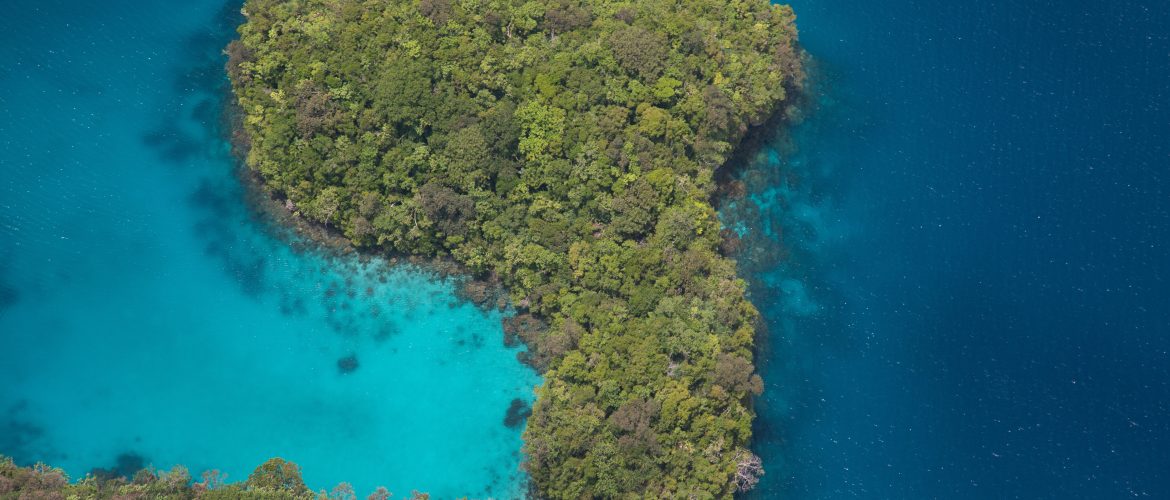The pristine paradise of Palau and the Federated States of Micronesia (FSM), located in the Western Pacific, is a biodiverse haven that beckons nature enthusiasts, conservationists, and adventurous travelers from around the world. Comprising a constellation of islands, atolls, and reefs, this region is a hotspot of marine and terrestrial biodiversity, offering a mesmerizing array of flora and fauna.
Terrestrial Biodiversity
Unique Flora: The islands of Palau and the Federated States of Micronesia are home to a variety of unique and often endemic plant species. Many of these plants have evolved in isolation over millions of years, leading to remarkable adaptations and distinct characteristics. The tropical forests of these islands harbor a plethora of endemic tree species, including the Palauan coconut and various rare orchids.
Avian Diversity: These islands provide essential habitats for a wide range of bird species, with over 200 recorded bird species in Palau and over 200 in Micronesia. Among these, the Micronesian kingfisher, the Palau owl, and the Chuuk monarch are just a few of the endemic species that thrive in the lush forests and mangrove swamps.
Marine Biodiversity
Coral Reefs: The marine ecosystems of Palau and the Federated States of Micronesia are globally recognized for their incredible coral reefs. These reefs are teeming with diverse marine life, including a multitude of fish species, crustaceans, and mollusks. Furthermore, the coral reefs boast some of the highest coral cover in the world, making them vital to global biodiversity.
Pelagic Wonders: Beyond the coral reefs, the waters surrounding these islands are home to numerous pelagic species, including sharks, manta rays, and sea turtles. Palau’s world-famous “Blue Corner” dive site is known for its shark population, while the Yap Islands are celebrated for their manta ray populations.
Blue and Green Islands Integrated Program
In Small Island Developing States (SIDS), the nexus between nature and well-being is evident. Their small size, isolation, and reliance on limited resources, including unique biodiversity, intensify environmental challenges. They are highly vulnerable to climate change consequences, such as rising sea levels, increasingly frequent and severe tropical storms, and coral reef depletion. Overfishing, increasing tourism and habitat destruction are other pressing concerns.
In many places globally, the importance of nature for society’s well-being often goes unrecognized in decision-making, resulting in policies that harm long-term public health. For instance, cutting down a mangrove to build a hotel or shrimp farm, means the loss of an important fish nursery and storm surge protector.
It is imperative that there is a balance between economic development (tourism, agriculture, and fisheries, etc.) and preserving the wealth of biodiversity that these countries possess. This will not only benefit present generations but will also guarantee a more sustainable and healthy future for the environment and for generations to come.
The Blue and Green Islands Integrated Program will assist SIDS such as Palau and the FSM in recognizing the value of ecosystem services and integrating them into decision-making to protect nature as the foundation for resilient and flourishing societies. This program will also promote the expansion of Nature-based Solutions (NBS) in tourism, food, and urban sectors, both on land and in aquatic environments.
The Global Environment Facility (GEF) is the world’s largest funder of biodiversity protection, nature restoration, pollution reduction, and climate change response in developing countries. In June 2022, donor governments pledged $5.33 billion to the GEF for its next four-year operating period (GEF-8). Much of the funding will be delivered through a set of 11 integrated programs that address multiple environmental threats at once.
Please stay tuned for further updates on our projects in these areas!
References:
Conservation on Biological Diversity (n.d.). Micronesia (Federated States of) – Main Details Biodiversity Facts. URL: https://www.cbd.int/countries/profile/?country=fm [Accessed on October 2023].
Gupta, Anu (2020). Overview of Biodiversity in Palau. In Palau. URL : https://sites.google.com/view/gef6palau/biodiversity-in-palau/overview-of-biodiversity-in-palau [Accessed on October 2023].
GEF (2022). GEF-8 Integrated Program, September 2022. URL: www.thegef.org [Accessed on October 2023].


